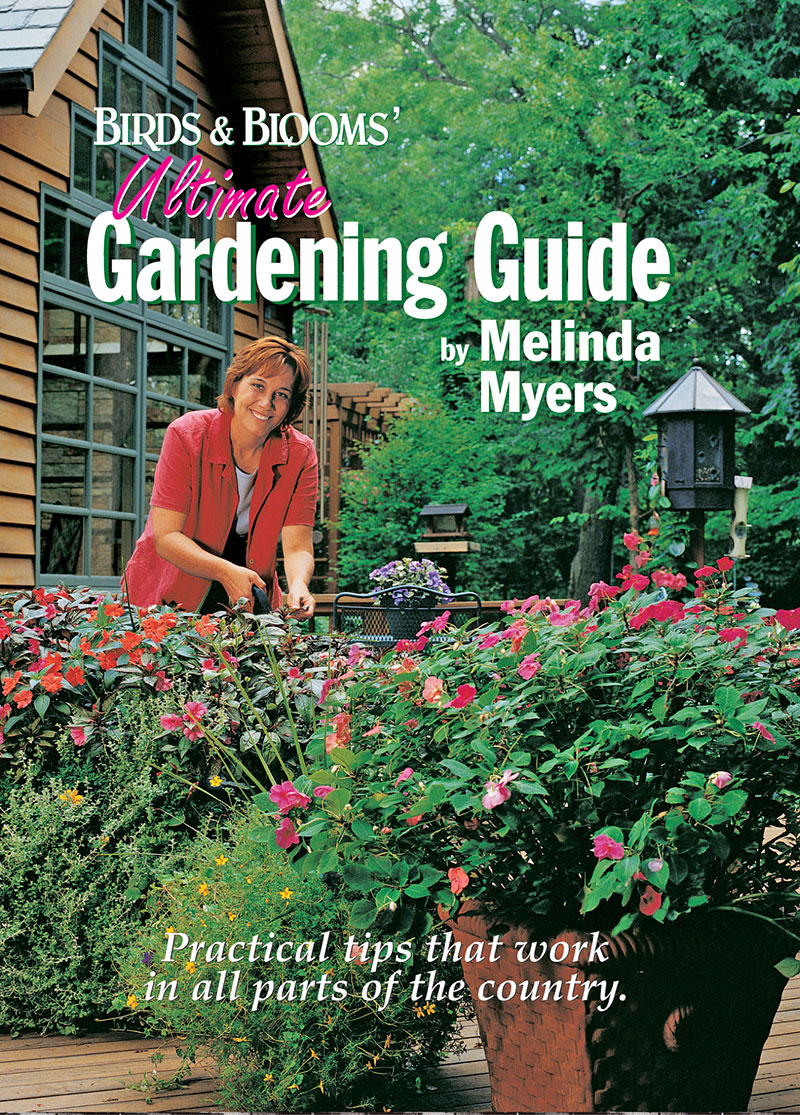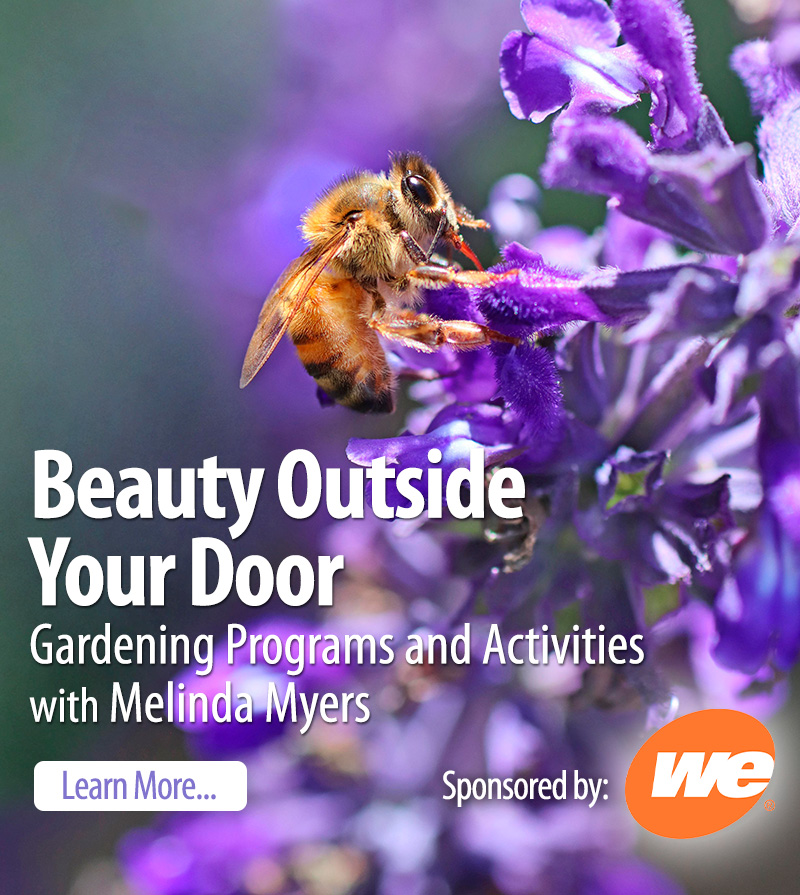May
Flowers & Ornamental Grasses
Flowers & Ornamental Grasses
- Look at the bulb catalogues filling your inbox and mail slot. Consider ordering now for fall planting.
- Allow the leaves of tulips, daffodils and other spring flowering bulbs to naturally yellow and dry before removing.
- Add annuals and perennials to bulb plantings to help mask the fading foliage.
- Increase your gardening success by incorporating organic matter into the soil before planting.
- Reduce container care by incorporating a slow release granular or pelletized fertilizer into the potting mix of containers gardens. It provides your plants with needed nutrients for several months.
- Harden off transplants before moving them from indoors or a greenhouse to the outdoors. Allow two weeks to complete this process.
- Remove flowers and cut back leggy annuals and perennials at the time of planting to encourage root development and better-looking plants throughout the season.
- As cool season annuals fade it is time for southern gardeners to prepare the soil and start planting their summer garden.
- Thin garden phlox, bee balm and other perennials prone to powdery mildew to reduce the risk of this disease.
- Be careful not to accidently weed out late-emerging perennials like balloon flower, butterfly weed and hardy hibiscus.
- Place cages and grow-through stakes over peonies that need support as soon as the leaves break through the soil.
- Begin staking other tall plants in need of support when they reach one-third of their mature size.
- Dig and divide overgrown perennials. Spring is the best time to divide summer and fall blooming perennials.
- Plant gladiolus corms every two weeks to extend the bloom time throughout the summer.
- Northern gardeners can start and southern gardeners can continue planting dahlia, canna and caladium “bulbs” in the garden after the danger of frost has passed.
- Mulch gardens with pine straw, shredded leaves or other organic material to suppress weeds, conserve moisture and improve the soil as they decompose. Northern gardeners should wait for the soil to warm before mulching.
- Remove flowers as they fade for a neater appearance and for many plants, continual or repeat bloom.
- Pinch mums and asters back to 6 inches throughout June for more compact growth and a profusion of fall flowers.
- Pinch back tall coreopsis, swamp sunflower, purple coneflower and other tall fall-blooming perennials to control height and stagger bloom times.
- Shear early spring blooming perennials like cheddar pinks, candytuft and creeping phlox by one-half to encourage fresh new foliage.
- Pull weeds as soon as they appear.
- Monitor plants for signs of aphids, mites, slugs and snails.
- Southern gardeners should start watching for and managing Japanese beetles.
- Remove and destroy columbine sawfly as soon as it is discovered. Fortunately, healthy established plants will recover.
- Watch for signs of deer, rabbits and woodchucks. These animals appreciate a new source of food – your transplants – in their diets.
Fruits, Vegetables & Herbs
Fruits, Vegetables & Herbs
- Proper soil preparation is critical in planting success. Add organic matter and fertilizer to the top 6 to 12 inches of garden soil.
- Plant fruit trees in the existing soil and amend the whole planting bed, if needed, when planting berries.
- Harden off transplants before moving them from indoors or a greenhouse to the outdoors. Allow two weeks to complete this process.
- Keep your garden close to the grill and kitchen by planting herbs, vegetables and compact fruit trees and berries in containers.
- Remove flowers that form on new plantings of June-bearing strawberries and those that form on day-neutral and everbearing for the first six to eight weeks after planting. This focuses the plant’s energy on establishing a strong root system.
- Pick asparagus when the stems are 6 to 8 inches long. Pick three-year-old plantings for 4 weeks and older plantings for 6 to 8 weeks.
- Harvest rhubarb leaves when they are 12 to 15 inches high. Limit picking to two weeks on two-year-old plantings and eight to ten weeks on established plants.
- Early May is the time for northern gardeners to plant cool season crops in the garden. Parsley, head lettuce, cauliflower, broccoli, Brussels sprouts, collards, kale and onion can move outdoors.
- Southern gardeners should harvest broccoli, cauliflower, cabbage, and sugar snap peas as soon as they are full size and mature.
- Sow seeds of lima beans, cucumber, corn, melons and squash when the soil has warmed.
- Northern gardeners should wait for consistently warm soil and air temperatures to plant tomatoes, peppers eggplants and other warm weather loving vegetables. Southern gardeners can keep planting while those in the far south may already be harvesting instead of planting.
- Cage or stake tomato transplants at planting. Start training the plants by securing them to the stakes or tucking stems into the cages and removing unwanted suckers as they begin to grow.
- Those in milder climates should harvest broccoli when the florets are still tight and green. Harvest the outer leaves of greens when they are full size and pick sugar snap and snow peas every few days for maximum flavor and productivity.
- Cover broccoli, cabbage, turnips and radishes at planting with one of the season-extending fabrics. These floating row covers create a barrier, preventing harmful insects, including cabbage worms, from damaging the plants.
- Mulch vegetable gardens to reduce the risk of soil borne diseases, suppress weeds and improve the soil as the organic mulch decomposes.
- Avoid corn seed maggot damage on corn and beans by waiting for the soil to warm before planting.
- Remove and destroy yellow and green striped or spotted cucumber beetles and potato beetles found on vine crops as soon as they appear.
- Remove fire blight-infected branches 6 to 9” below the canker on pear and apple trees. Disinfect tools between cuts.
- Watch for signs of deer and rabbits moving into the landscape for a meal.
Groundcovers & Vines
Groundcovers & Vines
- Northern gardeners can gradually move tropical vines overwintered indoors outside once the danger of frost has passed, and temperatures are staying in the 50’s.
- Dig and divide overcrowded, declining and poor flowering groundcovers.
- Mulch vines and groundcovers to conserve moisture, suppress weeds and improve the soil.
- Fertilize existing plantings in need of a nutrient boost with a low nitrogen slow release fertilizer if you have not yet done so.
- Remove and destroy any leaf and stem-blighted pachysandra.
- Remove any brown phomopsis-infected branches on junipers. Disinfect tools between cuts.
Indoor & Holiday Plants
Indoor & Holiday Plants
- Invigorate indoor plants and rejuvenate those on the decline with a summer break outdoors. Wait for night temperatures in the 60’s and gradually introduce the plants to the brighter light outdoors.
- Adjust the frequency you water your houseplants to compensate for the change in growing conditions indoors and out.
- Move houseplants spending the summer indoors away from air conditioner vents and extremely hot southern windows as needed.
- Fertilize indoor plants only if you want to promote more vigorous growth or the plants need a nutrient boost.
- Continue caring for forced bulbs and gift plants. Grow in a sunny window, water as needed and fertilize with a dilute solution of flowering plant fertilizer.
- Forced daffodils, hyacinths and tulips can be moved into the garden once the plants have gone dormant or the danger of frost has passed.
Lawns
Lawns
- Mow high and often enough so you remove only 1/3 of the total length of the leaf blade.
- Leave clippings on the lawn adding moisture, nutrients and organic matter to the soil. A season’s worth of clippings equals one fertilizer application.
- Early to mid-May is the second-best time for northern gardeners to seed their lawn.
- Sodding can be done anytime the soil is workable and sod is available.
- Create your own lawn patch for repairing winter-damaged areas. Mix a handful of grass seed in a bucket of topsoil. Spread over bare areas and keep the soil moist.
- Newly planted lawns need extra attention. Keep the soil surface moist until the sod is well rooted or the grass seed has sprouted.
- Late May or early June is the first time for northern gardeners and second time for southern gardeners to fertilize their lawn. Consider using a low-nitrogen slow-release fertilizer to reduce the risk of burn when hot weather arrives.
- Grow shade tolerant groundcovers like Canadian ginger, hosta, astilbes, ferns and other perennials instead of grass under trees and in other shady locations.
- Monitor for lawn diseases. Adjusting your lawn care practices is oftentimes enough to keep diseases in check.
Trees, Shrubs & Roses
Trees, Shrubs & Roses
- Spring is a good time to plant trees, shrubs and roses as long as you can provide sufficient water throughout the season. Those in hotter regions may prefer to wait until fall.
- Southern gardeners can transplant landscape palms in spring and early summer.
- Water new plantings often enough to keep the roots and surrounding soil slightly moist. Water established plants thoroughly when the top 4 to 6 inches of soil are crumbly and moist.
- Reduce your workload and improve the plants’ health by creating mulch beds around trees and shrubs.
- Add a fresh layer of mulch around trees and shrubs and along paths. Maintain a 2- to
- 3-inch layer of mulch, keeping it away from the trunks of trees and stems of shrubs.
- Prune spring-flowering shrubs as soon as they are done blooming.
- Prune ramblers, old shrub roses and once blooming climbers after their spring floral display fades.
- Remove old dead leaves on palms to tidy up their appearance.
- Blast aphids and mites off plants with a strong blast of water.
- Carefully knock eastern tent caterpillar tents out of trees as soon as they are discovered.
- Treat mugo and other pines that are infested with pine needle scale as well as lilac and dogwoods infested with oyster shell scale when vanhouette spireas are in bloom. Use an eco-friendly product that is gentle on beneficial insects.
- Monitor pines for clusters of European pine sawflies munching on their needles. Use a leather glove clad hand to remove and smash the culprits.
- Remove any brown phomopsis-infected branches on junipers. Disinfect tools between cuts.
- Prune off fireblight-infested branches 6 to 9” below the canker (sunken discolored area) on crabapples, cotoneaster, flowering quince and pyracantha. Disinfect tools between cuts.
- Remove black spot-infected and fallen rose leaves as you see them throughout the season.
- Watch for signs of deer, rabbits and woodchucks. Early intervention is more effective than trying to repel them after they have made dining in your landscape a habit.
Categories
Upcoming Live Events
& Webinars
April 20, 2024
Pruning Hydrangeas and Other Shrubs
Pasquesi Home & Gardens, Lake Bluff, IL
April 27, 2024
Ridges & Rivers Book Festival
Viroqua, WI
April 28, 2024
Flowering Trees and Shrubs
Ebert's Greenhouse Village, Ixonia, WI
May 1, 2024
FREE WEBINAR
Ornamental Fruits and Vegetables
Register now
May 4, 2024
Garden U 2024
New Richmond, WI
Register now
May 9, 2024
FREE WEBINAR
How to Plant Your Rain Garden
Register now
May 11, 2024
Ask The Plant Doctor Q & A
Ebert's Greenhouse Village, Ixonia, WI
May 12, 2024
Ask The Plant Doctor Q & A
Ebert's Greenhouse Village, Ixonia, WI
May 18, 2024
Ask The Plant Doctor Q & A
Ebert's Greenhouse Village, Ixonia, WI
June 1, 2024
Selecting, Planting, Pruning and Caring for Hydrangeas
Ebert's Greenhouse Village, Ixonia, WI
June 5, 2024
FREE WEBINAR
Under-Appreciated Pollinators
Register now
WATCH ON-DEMAND WEBINARS
Learn More










